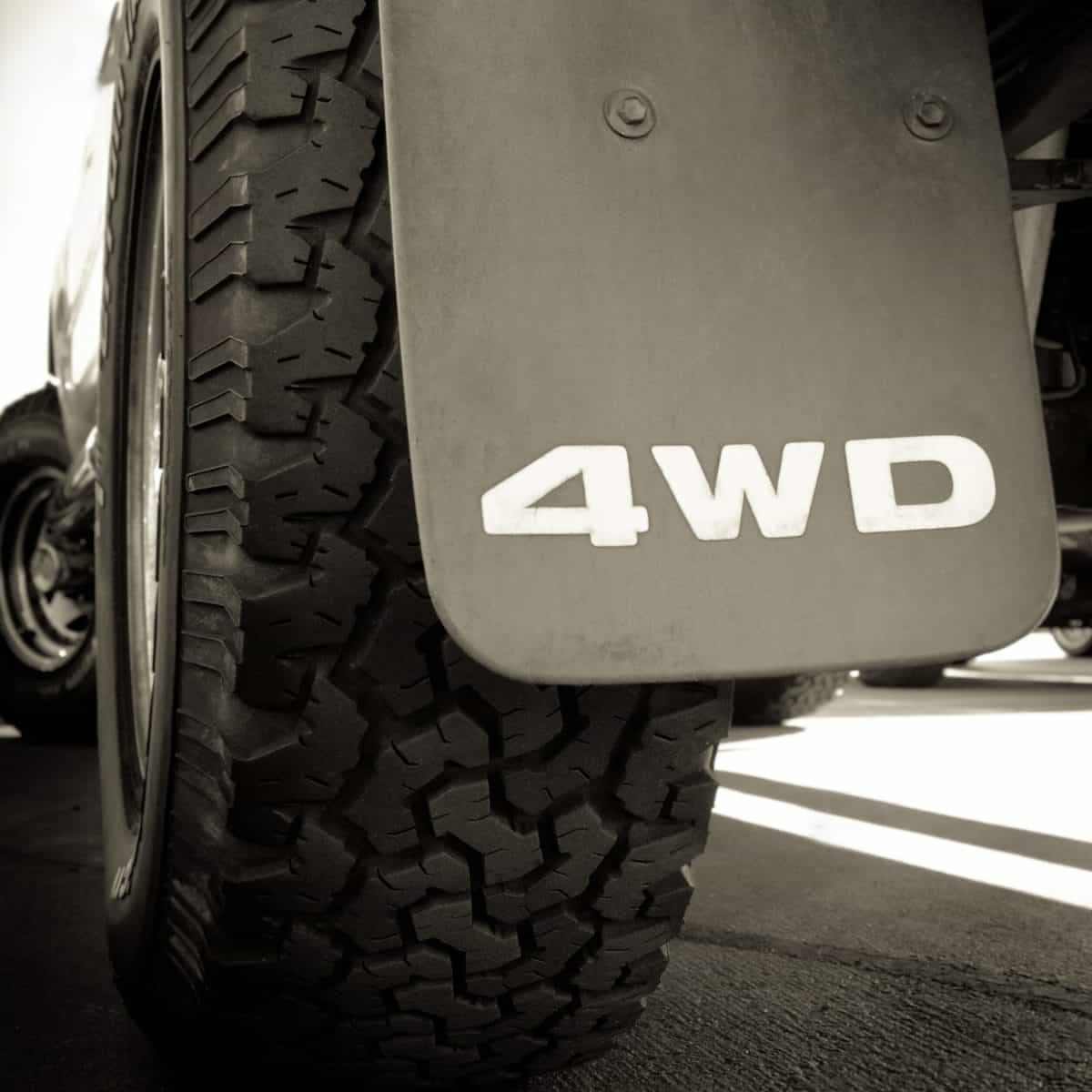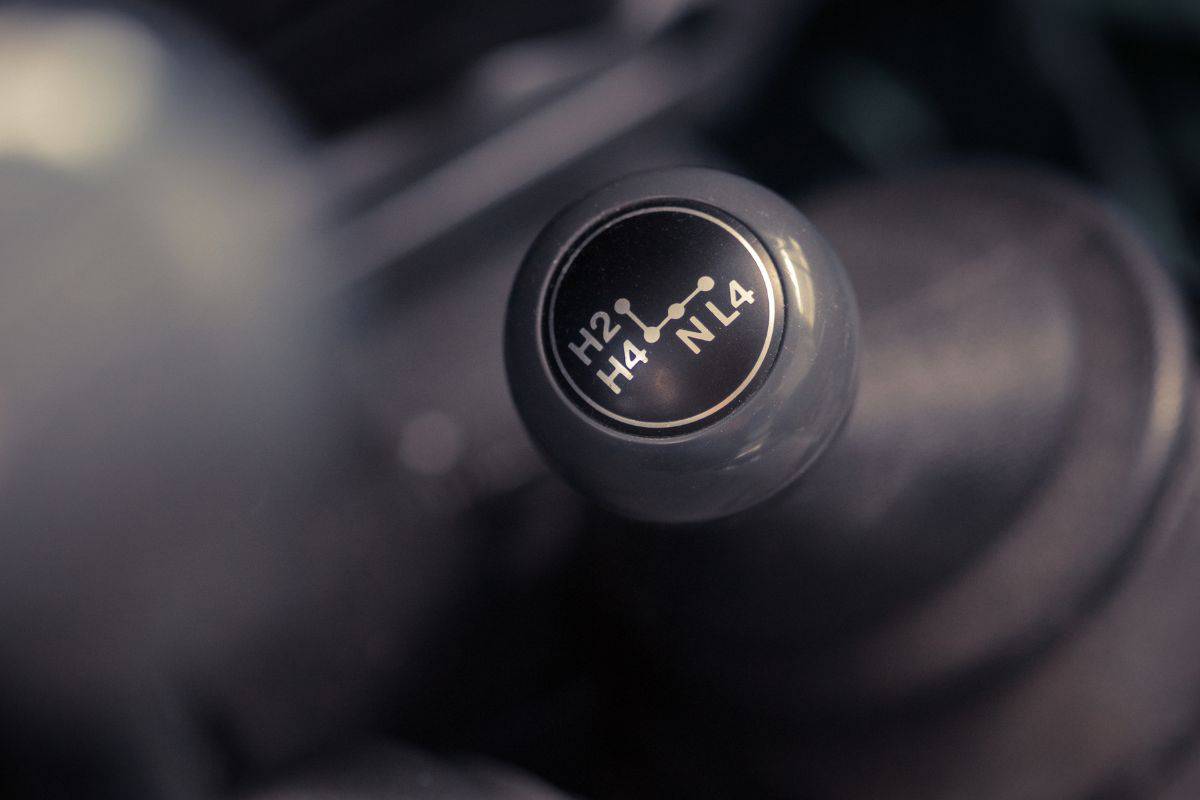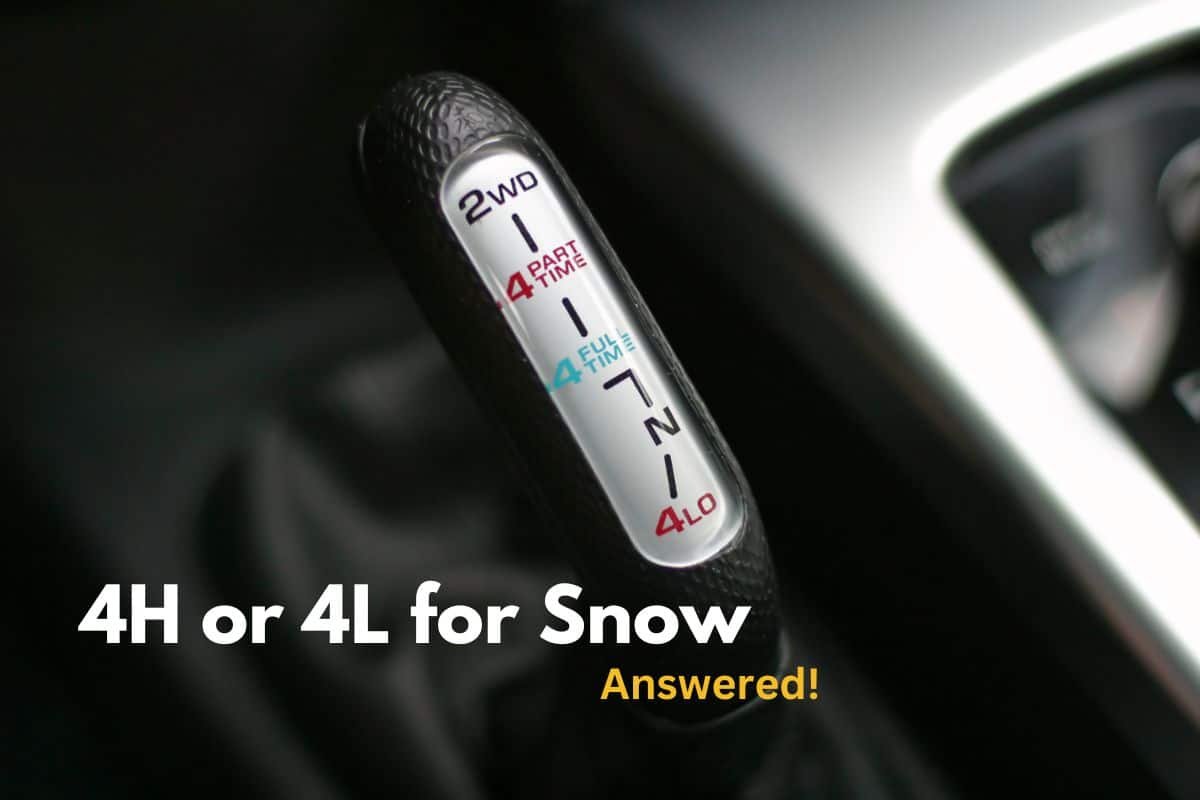What do H4 and L4 mean? (referring to four-wheel drive systems)
Understanding H4 and L4 in four-wheel-drive systems is crucial for off-road enthusiasts; we break down their meanings to help you choose the right drive mode for your adventure. Let’s unravel the mysteries of H4 versus L4 and their impact on your off-road journey.

If new to the off-road driving world, some terms can be confusing at first. The letters, numbers, and acronyms can blend into a meaningless jumble. This article will help you further understand four-wheel drive systems.
H4 is a high-speed mode that engages four-wheel driving and should be used in low-traction conditions. L4 is a low-speed mode also for four-wheel driving and should be used when maximum traction or power is needed, such as driving on steep hills, or hard pulling in slippery conditions.
Read on to learn more about H4, L4, and other modes, and when it is best to use them.
Learn More: If you are on the road and facing snowy conditions, read this article: Do I Use 4H or 4L to Drive in Snow?
Four-Wheel Drive Systems
Four-wheel drive systems are an incredible addition to the driving world and can help you adapt to overcome any road condition you may face.
Whether you are driving to work in the city, hauling your dirt bikes in the woods, or just trying to get out of your icy driveway, you can use the perfect four-wheel mode.
H2 Mode
The first mode we will discuss is the classic mode used for everyday driving– the H2 mode. This is the mode that your vehicle should be in when you first purchase it.
H2 means high speed, two-wheel drive. Two-wheel drive means that only two of your wheels are receiving power, and the other two are just along for the ride.
Two-wheel drive is great for mild conditions, and because you are not powering all of the wheels on your vehicle, you will use less energy and be more fuel-efficient.
However, you will have less force when driving because only two of your wheels are receiving power.
This means that two-wheel drive is not the best mode when driving on harsh terrain or in conditions requiring your vehicle to have an extra boost.
But luckily, if you have a vehicle that can change from two-wheel drive to four-wheel drive, you will be set to handle any terrain you may come across.
Learn More: How do I know if my 4-wheel drive is working?

H4 Mode
Imagine you are driving along and you come across a road that suddenly turns into the dirt (maybe you are visiting your grandparents in a small town in Idaho), and it had rained the night before. Now, suddenly you are trying to drive in deep, slippery mud. What do you do?
No need to fear, you can turn your vehicle from H2 to H4! H4 mode means high-speed, four-wheel drive.
The best part is that you do not even need to stop your car to switch modes. You can switch from two-wheel to four-wheel on the fly! Just ensure you are going less than 50 mph before changing modes.
Changing your vehicle to four-wheel drive allows your vehicle to power all four tires at once, which will give you extra force and traction.
This extra force and traction will help you drive through mud, snow, sand, or any other slippery conditions you find.
I can personally attest that four-wheel drive will get you out of tight spots. I had friends from California (who had never driven a truck through the mud before) get their truck stuck in deep, deep mud.
I took over, tried to rock the truck a few times, and was making slow progress until I looked down and realized that the truck was still in two-wheel drive!
I had just assumed they would put the truck into a four-wheel drive when they got stuck. I switched modes and drove out of the mud like I was driving on asphalt.

You should drive your vehicle in four-wheel drive often to keep the parts lubricated. The recommended distance is 10 miles per month.

To change from H2 to H4, turn the small lever (located near your gear shift) from H2 to H4.
When you have properly put your vehicle into four-wheel drive, an icon that looks like four wheels attached to an axel should appear on your dashboard.
N Mode
The N mode is your neutral mode. This means that none of your wheels will receive power. To engage the N mode, your vehicle needs to be completely stopped.
You would use this mode if you are towing your vehicle and you need the tires to be able to spin freely.
L4 Mode
The L4 mode means low speed, four-wheel drive, and it is quite similar to the H4 mode. You would use it for similar situations. L4 mode is for when you need absolute maximum power and traction.

If you find yourself driving up or down a hill in slippery conditions, such as ice or snow, then the L4 mode is the one for you.
You will not be driving as fast, because the L4 mode is a low speed, but if you are desperately trying to crest a hill, you will not need to go very fast.
And the same goes for going down a hill– if you are trying to be careful and you need extra traction to be safe, you will not be driving very fast.
You should also use L4 if you are hauling something heavy in mud, snow, sand, or icy conditions.
Putting your vehicle into L4 mode is a little more tricky than H4 mode.
- To engage low-speed four-wheel drive, stop the vehicle and depress the brake.
- Put the automatic transmission into neutral.
- Shift the smaller lever past neutral to L4 – the VSC off indicator will light up.
- Then put the automatic transmission back into drive.
- To return to high four-wheel drive or two-wheel drive, stop the vehicle and follow the same process.
Source
When the L4 mode is engaged, you should see an icon saying “4LO” flash on your dashboard.
To change from L4 mode back to H4 or H2, stop your vehicle, and repeat the steps above but shifting the lever back into the desired mode.
Watch the video below to see a visual on your four-wheel drive system to see what things look like, and where they should be located.
Which Vehicle is Best For Your Situation?
Not every vehicle is best for every situation. Depending on where you live, how often you drive, or what you are most comfortable in, there are different vehicles that you should drive.
“A low-slung sports car with rear-wheel drive is not a good choice if you live at the top of a steep hill accessible via a rutted dirt road that is buried under ice and snow all winter and slick with mud in the spring. Nor is a raised 4WD vehicle with huge knobby tires ideal for the driver whose daily commute consists of nicely paved city streets.”
Source
If you are a city slicker who drives exclusively on asphalt in warm, sunny conditions, then a four-wheel drive vehicle is not worth the cost.
A two-wheel drive vehicle with a front-wheel drive system is your best option. Front-wheel systems have all of the power go to the front two wheels. Most passenger cars have a front-wheel system.
Common front-wheel vehicles:
- Volkswagen Golf GTI
- Hyundai Veloster N
- Honda Accord
- Honda Civic Type R
- Nissan Sentra
- Ford Focus ST
- Ford Puma

If you live in a place that is still mostly asphalt but gets a lot of snow, ice, and possibly mud, then you should consider getting an all-wheel-drive (AWD) vehicle.
AWD works by only giving power to all four wheels when you need it. Otherwise, it runs like a normal, front-wheel car.
AWD systems can also run all the time, but they do not have different modes for different situations like four-wheel drive vehicles do.
So, if you know that you might have some slippery roads ahead of you, an AWD vehicle is probably the best vehicle for you.
Common AWD vehicles:
- Subaru Crosstrek
- Subaru Outback
- Ford Taurus
- Dodge Challenger
- Ford Fusion
- Fiat 500X
However, if you plan on doing any kind of off-roading, then AWD will not be enough. If you want to conquer serious mud, snow-packed mountain passes, or massive sand dunes, you will need a vehicle with four-wheel drive.
Not only will you need power going to all four wheels, but you may need to change from H4 to L4 if you are hauling something heavy or going up a steep slope.

If common off-roading is part of your lifestyle, you should definitely get a four-wheel drive vehicle.
The best part about four-wheel drive vehicles is that you can still use them for everyday use! Just put it in H2 mode and you are set to drive to work.
But when it’s the weekend and you are ready for some crazy adventures, H4 and L4 modes are right there waiting to get you through any terrain.
Common four-wheel drive vehicles:
- Jeep Wrangler
- Toyota Land Cruiser
- Range Rover
- Jeep Grand Cherokee
- Ford F-150
- Ram 1500
- Chevrolet Silverado 1500
No matter your situation, there is the perfect vehicle out there for you.
Share Your Insights With US
Did we forget something, get something right (or wrong)? We’d love to hear your insights! Share your automotive experiences based on our article in the comments below. Your input enriches our community’s knowledge. Thanks in advance for sharing!
Recommended Reading
- What Are 2H, 4H, And 4L on 4×4 Trucks and Suvs?
- Should You Use 4×4 on the Highway?
- How to drive a 4×4 | 15 Must-Knows Tips
- What is the difference between 4X4 auto and 4X4 high?
- What Is The Difference Between Diff Lock And 4X4?
- What Does DAC Mean in a 4Runner?
- Can I Turn Off 4×4 While Driving?
- How Do I Put My Lexus GX 460 is 4WD?
- Toyota 4Runners: All The Things You Need To Know
- How Do I Know If My Lexus RX 350 Is AWD
